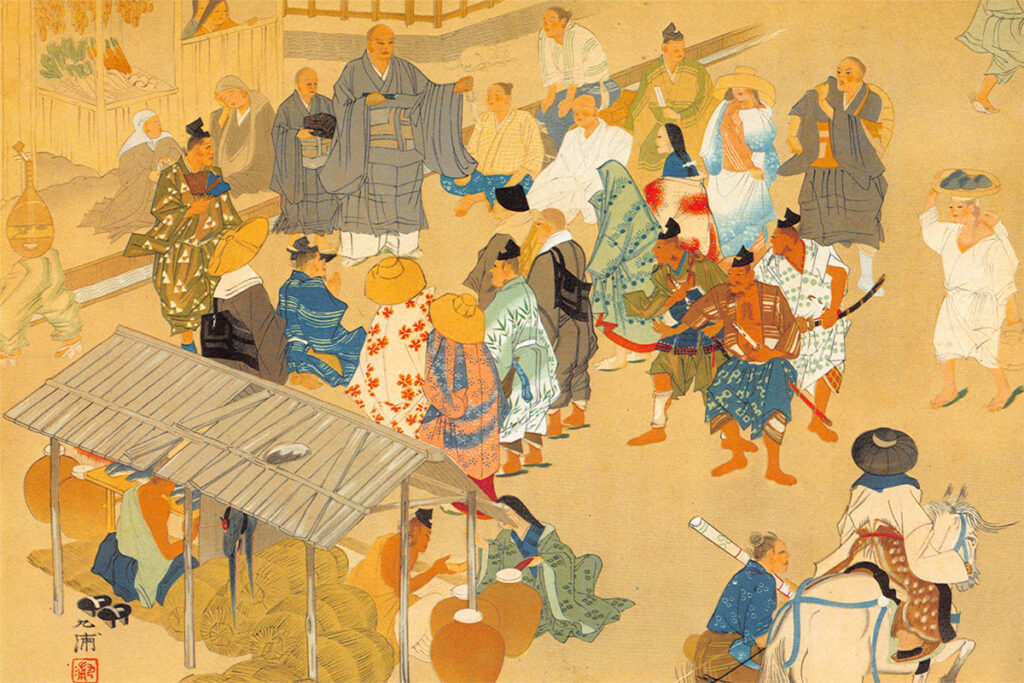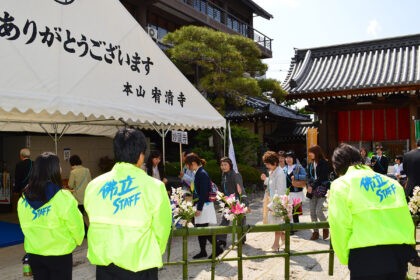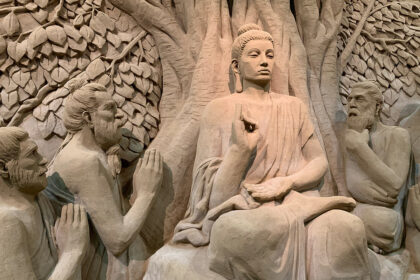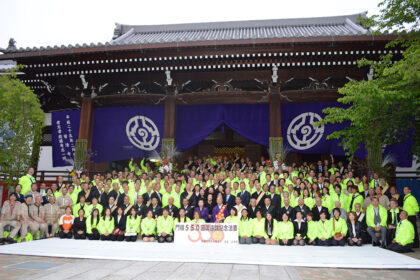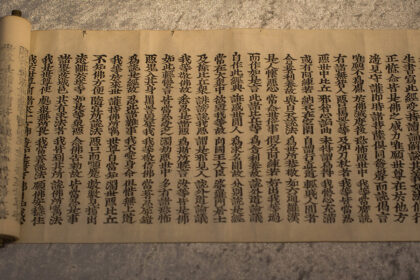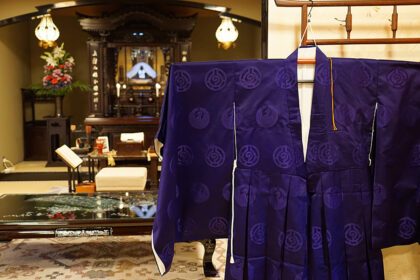<< Previous Article
Gohōmon—Sermons that Deepen and Enhance Faith in the Odaimoku (9/11)
In chapter 16 of the Lotus Sutra, “The Life Span of the Buddha” (如来寿量品第十六), the Buddha said: “I have been preaching the Law without rest, teaching and converting countless millions of beings, making them walk the Buddha way.” [Translated from Chinese.] This statement is expressed in Japanese as Jōseppō-kyōke (常説法教化). “Jōseppō” (常説法) literally means “preaching sermons anytime, anywhere,” and “Kyōke” (教化) means “converting people to the true Buddhist faith.” Therefore, the term “Jōseppō-kyōke” represents the Buddha’s profound compassion for all sentient beings.
The word “Kyōke” is an abbreviation for “Kyōdō-tenge” (教導転化). “Kyō” (教) literally means “true Buddhist faith,” “Dō” (導) is “leading people toward the true faith,” “Ten” (転) is “changing their faith from wrong to right,” and “Ge” (化) means “renewing.” Thus, “Kyōke” expresses the act of converting others to the true Buddhist faith—the faith in the Odaimoku.
Another crucial concept is “Shakubuku” (折伏), which is essential for “Kyōke.” It is an abbreviation for “Hashaku-kuppuku” (破折屈伏). “Hashaku” (破折) literally means “snapping, tearing, or breaking a wrong way of thinking,” and “Kuppuku” (屈伏) means “submitting and obeying.” Thus, “Shakubuku” involves pointing out someone’s errors and explaining the true religion or faith. In HBS faith, there are three kinds of Shakubuku:
1. Point out why someone’s faith (religion) is wrong.
2. Explain why HBS is the true faith.
3. Advise someone to improve their ways in HBS faith to become a devout believer.
To save all sentient beings, the Primordial Buddha continually preached the Odaimoku (Jōseppō) to guide them along the Buddha way (Kyōke). Nichiren Shōnin, a reincarnation of Jōgyō Bodhisattva (Superior Practice Bodhisattva), also dedicated his life to the propagation of the Odaimoku. Therefore, we, as HBS members, must strive to save others and dedicate ourselves to the practices of Shakubuku and Kyōke to fulfill the Buddha’s wish.
In the distant past, when the Primordial Buddha was a human being like us, he attained Buddhahood through two practices: chanting the Odaimoku, Namu Myōhō Renge Kyō, and spreading the Odaimoku to others. These two practices together are called Bosatsu-gyō (菩薩行)—the practice to attain Buddhahood. Therefore, in Honmon Butsuryū Shū, we emphasize three practices: Kushō-gyō (口唱行) (chanting the Odaimoku), Shakubuku, and Kyōke (the latter two mean spreading the Odaimoku to others).
Everyone in this world can be saved by chanting Honmon Happon shoken (本門八品所顕), Jōgyō shoden (上行所伝), and Honnin-geshu no Namu Myōhō Renge Kyō (本因下種之南無妙法蓮華経). How wonderful this is! Knowing this, HBS members greet each other with “Arigatō gozaimasu” (ありがとうございます). This greeting is a distinctive feature of HBS, making it easy to identify members by their unique way of greeting. So, what does “Arigatō gozaimasu” mean? Let’s explore this in the next article.
Next Article >>
Arigatōgozaimasu—expression HBS members use to greet each other (11/11)

